After a16z estimated the market potential behind the x402 protocol at $30 trillion, this protocol, once only of interest to a few technological pioneers, is rapidly moving into the mainstream. While many are still asking, "What is x402?", what deserves more attention is: If this market becomes a reality, how will the value be distributed? Which participants will emerge as the ultimate winners?
This article will analyze the value accumulation path, ecological structure, and challenges faced by the x402 protocol from a practical perspective, attempting to outline a new landscape for the future API economy and payment networks.
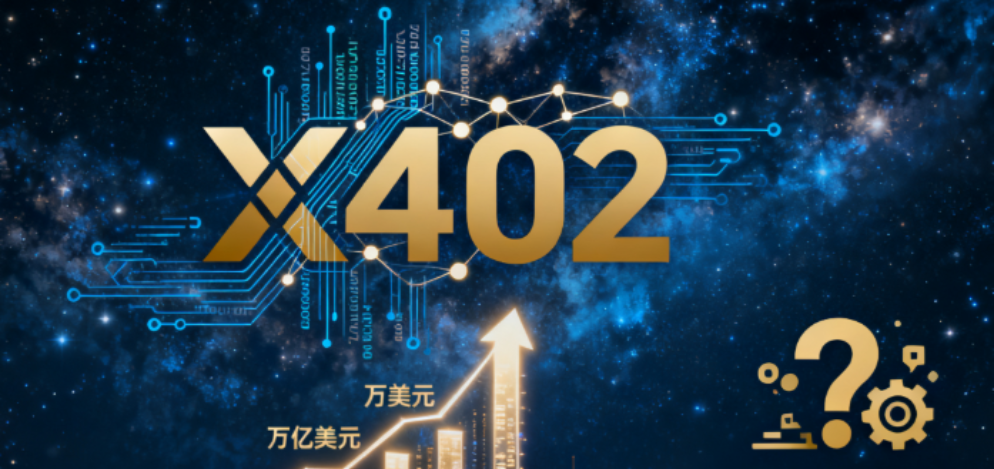
1. Core Positioning of x402: From API Calls to Payment Transactions
The essence of the x402 protocol is that every HTTP API call can carry a payment action. In other words, any interaction that occurs on the internet—a button click, a data request, a service call—can be transformed into a micropayment transaction.
● From a technical implementation perspective, x402 is not a groundbreaking technological innovation. It is built on existing blockchain transaction foundations, inheriting all the characteristics of blockchain transactions, including Gas fees and wallet verification. However, as a payment standard, the true power of x402 lies in its compatibility with the widely used HTTPS protocol, allowing it to seamlessly integrate into existing internet infrastructure, giving the entire network native payment capabilities.
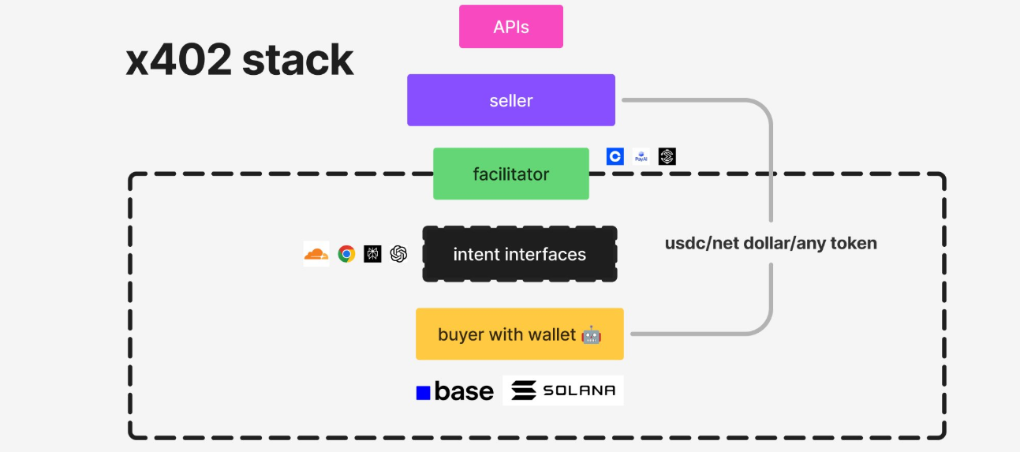
2. Ecological Quadrants: Value Distribution and Game Dynamics
Like all payment systems, the x402 ecosystem has four key stakeholders: suppliers (sellers), demanders (buyers), intermediaries, and the underlying chains and tokens. Each party plays a unique role in this value network.
1. Suppliers (Sellers): Unlocking New Revenue Dimensions
Suppliers can be divided into two categories:
● First-party/Second-party Sellers: Projects like Switchboard that directly sell their own priced data. For them, supporting x402 means opening up new markets. For example, The New York Times could use the x402 protocol to charge web crawlers for access to content, creating a new revenue stream; if Airbnb integrates x402, AI agents like Perplexity AI could directly use USDC to pay for bookings and automatically complete commission distribution in the same transaction.
● Third-party Sellers/API Marketplaces: These participants integrate multiple APIs to provide users with a unified payment entry point. Their business model is essentially arbitrage—potentially connecting to APIs for a fixed fee (like $20 per month) and then charging users per call (like $0.0001). In the early stages of ecosystem development, these intermediaries (like Corbits) are crucial for solving cold start problems.
For suppliers, the immediate opportunity lies in upgrading existing APIs or websites to support x402, gaining additional revenue and traffic from network effects.
2. Demanders (Buyers): The AI Agent-Driven Future
Demanders are primarily API consumers, especially the growing "AI agent" economy. Any user with a crypto wallet or self-operating AI agent can pay API fees through x402.
However, stimulating demand is the most challenging aspect of the entire ecosystem. Currently, real demand is almost zero, and most transactions are still experimental. Two possible paths to stimulate demand are:
● Exclusive Content: Sellers provide high-value data exclusively through x402 (e.g., news sites only allow paid crawling).
● Network Effects: Accumulating enough APIs that support x402 to create an attraction for developers and agents.
Notably, Cloudflare, as a member of the x402 Foundation and the world's largest edge network service provider, could become a key driver. Its global network nodes and core position in controlling traffic distribution enable it to activate x402 payments for specific content with a simple "switch," creating new revenue streams for developers.
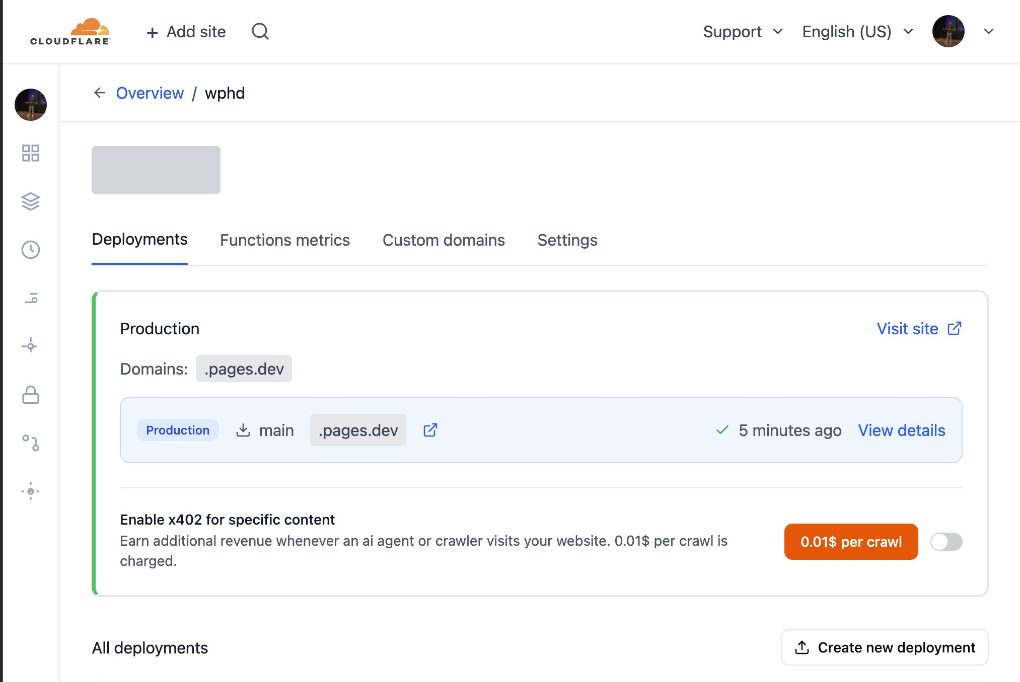
3. Intermediaries: An Inevitable Price War
Intermediaries play a role in the x402 ecosystem similar to that of Visa and Mastercard, routing payments between buyers and sellers. Currently, they typically charge fees ranging from 0 to 25 basis points (most are temporarily free), but this is destined to be a fierce price war, as the technical barrier to building intermediaries is very low.
● Unlike Visa/Mastercard's deep competitive moat, x402 intermediaries have almost no sustainable competitive advantage.
● Real network effects accumulate on the underlying blockchain, and giants like Cloudflare or Google, which control user interfaces, can easily launch their own intermediary solutions in a short time. More importantly, ecosystem promoters like Coinbase may even open-source and provide intermediary services for free to promote the entire ecosystem, further compressing profit margins.
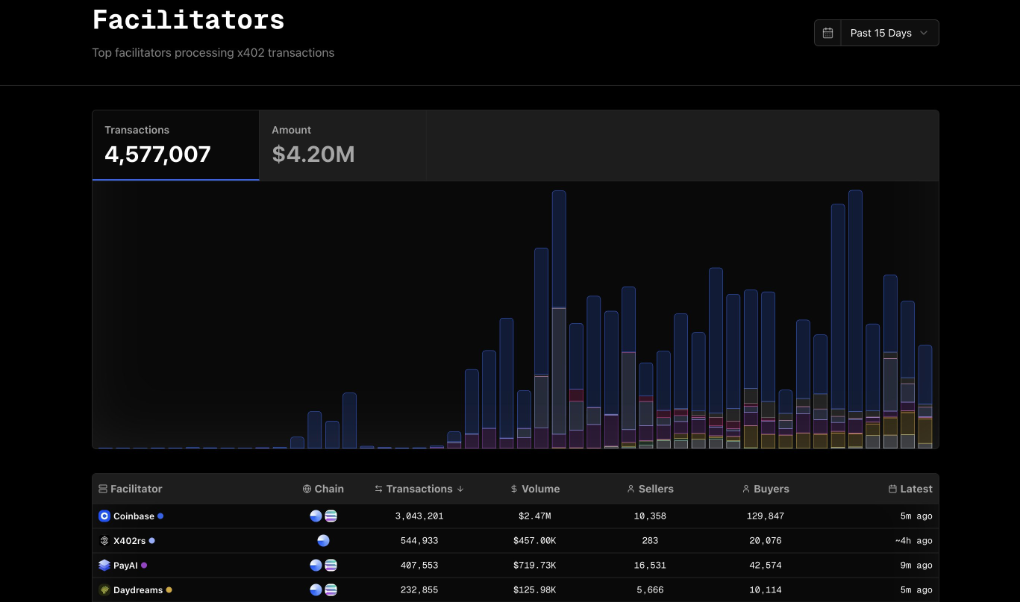
4. Public Chains and Tokens: The Ultimate Winners in Value Capture
As a key project of Coinbase, the Base chain and USDC stablecoin naturally dominate the x402 ecosystem. However, other public chains like Solana (which has hosted x402 hackathons) are also actively positioning themselves. All stablecoins and public chains will compete for dominance in x402, as this directly relates to the growth of on-chain TVL (Total Value Locked) and transaction volume.

● From a value capture perspective, public chains, tokens, and wallets are likely to become the biggest winners in the x402 ecosystem.
● Coinbase and its CEO Brian Armstrong's strong promotion of x402 is not coincidental—this company controls the complete technology stack: intermediaries (CDP), public chains (Base), stablecoins (USDC), and wallets (Base app and Coinbase embedded wallet). This end-to-end control position allows it to provide complete solutions to enterprise clients (like Cloudflare, Vercel) while keeping the core protocol open-source.
3. Challenges and Bottlenecks: Technical Limitations and Competitive Landscape
1. Technical Reality: Wallets and Gas Fees Have Not Disappeared
A common misconception is that x402 can pay without a wallet. In reality, x402 is not magic—it still requires wallets and blockchain transactions (including Gas fees); it’s just that these complexities have been abstracted or processed in bulk off-chain through API credits.
2. Economic Viability: The Real Dilemma of Micropayments
Currently, large-scale micropayments on public chains like Solana or Base are not economical. Due to the existence of base fees and priority fees, any payment below $0.1 may not be cost-effective, as payment transactions need to compete for block space with speculative transactions (like Memecoin exchanges). Solutions like Tempo, which design dedicated channels for payment transactions, may better meet actual needs.
It is foreseeable that as x402 becomes more popular, dedicated sidechains, application chains, or Rollup solutions for handling x402 payments will emerge.
3. Competition from Giants: The Shadow of Stripe
The most direct competition facing x402 comes from Stripe. This payment giant has launched its own Agent Commerce Protocol (ACP), processing payments over existing card networks through shared payment tokens. When the largest consumer-grade AI application, ChatGPT, announced it would implement business functions through Stripe, it clearly indicated that traditional payment giants would not sit idly by while the market was eroded.
4. Future Outlook: Beyond Fixed Pricing to Resource Markets
Currently, x402 mainly handles fixed pricing scenarios (like "0.001 dollars per API call"), but this has yet to unleash the true potential of blockchain: creating markets for everything.
The unique value of x402 may lie in realizing "resource markets." These resources can include:
● Data or computational results (like price information, news content)
● Computational power or reasoning ability
● Complex workflows (like custom product manufacturing)
● Priority services (like time slots or bandwidth reservations)
Imagine a future where you tell an AI agent, "Customize a chair for me with specifications for $500." This agent would autonomously coordinate multiple resources—sourcing wood, hiring carpenters, arranging delivery—fully automated, completely solving the resource coordination problem.
Thanks to the development of large language models and AI agents, we now have machines capable of reasoning and negotiating across the entire supply chain. This will drive the process of hyper-financialization, forming market dynamics that price every resource and action in real-time, with AI agents seamlessly trading and paying behind the scenes.
Although x402 itself does not support dynamic pricing, blockchains like Solana can support permissionless market creation mechanisms. Imagine every Airbnb host having a dynamic pricing market, where prices are no longer fixed by the host but determined entirely by market demand—this is the future that x402 could lead us toward.
5. A Calm Perspective: Short-Term Speculation vs. Long-Term Value
Despite the broad prospects, it is essential to maintain a calm perspective on the current development stage of x402. The protocol is undoubtedly overhyped, and if considering investing in x402-related tokens, there is a 99% chance they are worthless.
● However, from a long-term perspective, the reasons for extreme optimism remain: x402 is expected to become the foundational technology for an agent-based internet and deeply integrate into the crypto network structure. It evokes memories of the previous Solana Blinks (which allowed every click to become a Solana transaction request), but this time, a giant like Coinbase is fully pushing it. If successful, x402 will forever change the way payments are made on the internet.
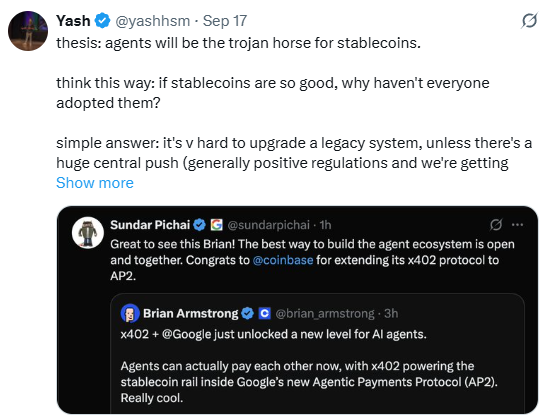
The flow entry and user interface will determine the ultimate winners. This transformation has just begun, but it is already destined to reshape the trajectory of digital economic development over the next decade.
In the x402 ecosystem, the party that controls the flow entry and user interface—along with the underlying assets and public chains—will capture the most value. This is precisely why Coinbase is pushing so hard: it controls the complete technology stack from intermediaries to public chains, from stablecoins to wallets.
Join our community to discuss and grow stronger together!
Official Telegram community: https://t.me/aicoincn
AiCoin Chinese Twitter: https://x.com/AiCoinzh
OKX Welfare Group: https://aicoin.com/link/chat?cid=l61eM4owQ
Binance Welfare Group: https://aicoin.com/link/chat?cid=ynr7d1P6Z
免责声明:本文章仅代表作者个人观点,不代表本平台的立场和观点。本文章仅供信息分享,不构成对任何人的任何投资建议。用户与作者之间的任何争议,与本平台无关。如网页中刊载的文章或图片涉及侵权,请提供相关的权利证明和身份证明发送邮件到support@aicoin.com,本平台相关工作人员将会进行核查。




